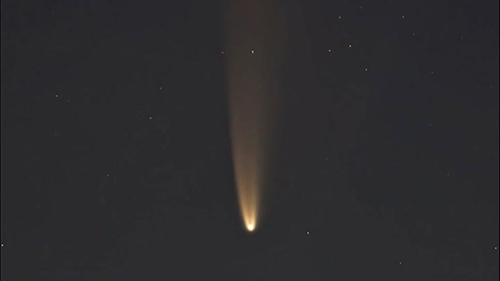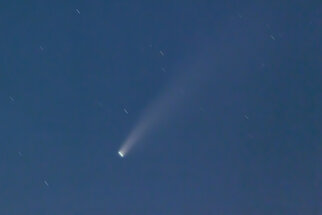Call it the side-effect of the COVID pandemic or the boon of mankind current situation. One thing is certain that we haven’t seen such clear and non-polluted skies for a longtime. And with clearer skies comes the opportunity to peak into the universe.
The Comet NEOWISE has captured a lot of attention in the last few weeks and if you have not seen it yet then there is still sometime left for you to catch it in the sky.
The Comet is known as NEOWISE after the NASA mission that found it: The Near-Earth Object Wide-field Infrared Survey Explorer (NEOWISE). It will be a little easy to see in the northwest sky every night through July 30. It will be nearest to the earth on July 22. NASA says NEOWISE will look like a fuzzy star with a bit of a tail with a naked eye. So try to use at least binoculars or a small telescope to get a closer view.

“From its infrared signature, we can tell that it is about 5 kilometers across, and by combining the infrared data with visible-light images, we can tell that the comet’s nucleus is covered with sooty, dark particles left over from its formation near the birth of our solar system 4.6 billion years ago,” said Joseph Masiero, NEOWISE deputy principal investigator at NASA’s Jet Propulsion Laboratory in Southern California.
The object was discovered by a team using the NEOWISE space telescope on March 27, 2020. It was classified as a comet on March 31 and named after NEOWISE on April 1. It has the systematic designation C/2020 F3, indicating a non-periodic comet which was the third discovered in the second half of March 2020.
If you are scheduling to gaze at the sky, a pair of binoculars is recommended to have a superior experience. Around 30th July the comet will be visible for an hour near Ursa Major (Saptarshi Mandal) at an altitude of 40 degrees. After July it will fade away very fast and will not be visible to the unassisted eye. A pair of binoculars or a small telescope will enhance its visibility.

